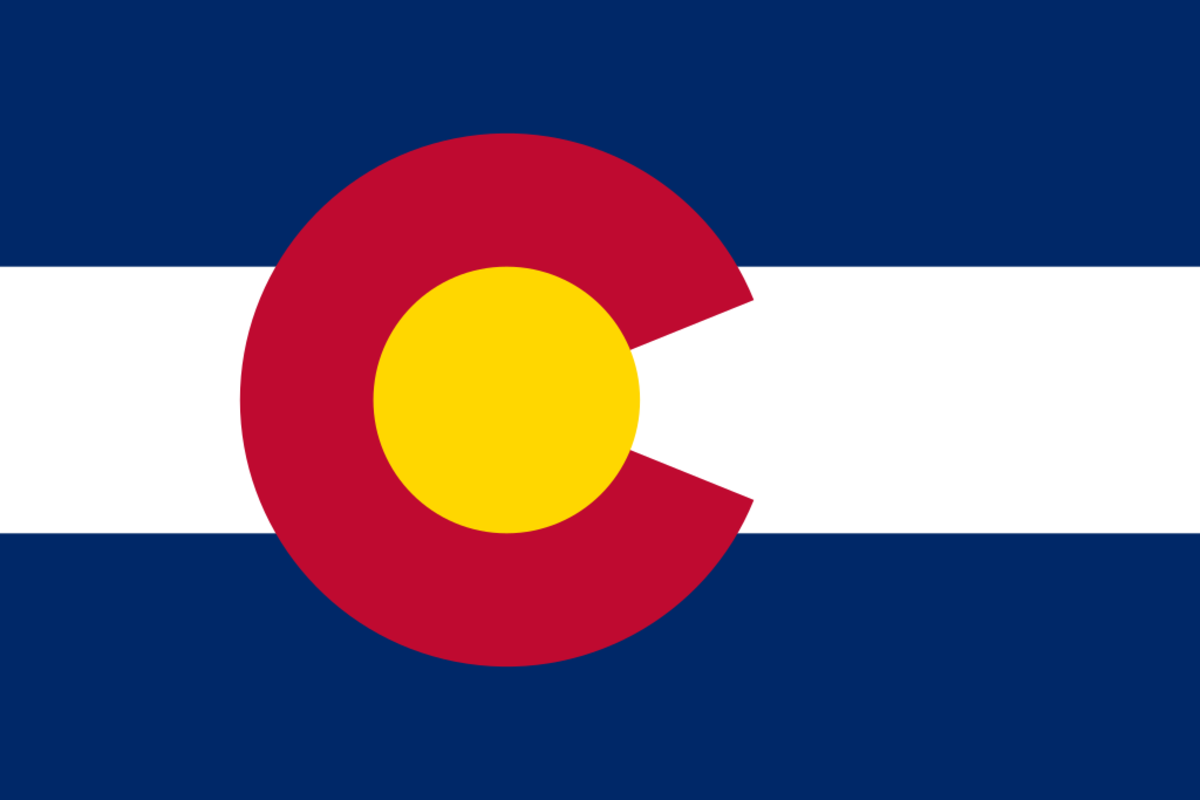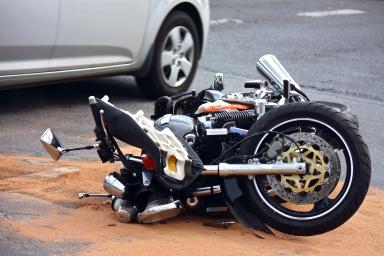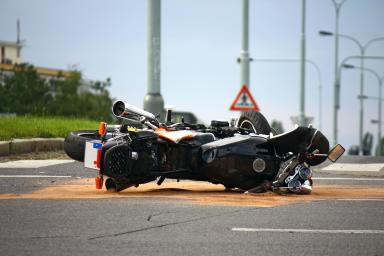Colorado Motorcycle Laws

A total of 745 people were killed in traffic accidents throughout Colorado in 2022. This is the state’s highest number of recorded fatalities since 1981, constituting a 57% increase in total fatalities compared to records from 10 years prior. In addition, of the total deaths recorded, 36% involved motorcyclists, bicyclists, and pedestrians, with the numbers being the highest on record since 1975.
Previous records released by the Colorado Department of Transportation showed that in most motorcycle accidents, head injury was the leading cause of fatalities in the state, largely due to riders not wearing helmets or protective gear. Additionally, the CDOT found that overspeeding was a contributory cause in at least five fatal crashes, while drunk, aggressive, and careless driving were also considered common factors.
In line with these findings, the CDOT continues to work with the Colorado State Patrol and Department of Revenue to remind motorists about obeying traffic ordinances throughout the state. In addition, the State Patrol imposes regulations that focus on preserving the safety of motorcyclists. If an accident occurs, the state also has personal injury guidelines and statutes in place to guide those who are injured in recovering their losses.
Colorado Helmet, Protective Gear, and Motorcycle Equipment Regulations
In Colorado, only motorcycle riders and passengers aged below 18 are required by law to wear helmets when riding. These helmets must pass the standards set by the CDOT. Additionally, the state requires all motorcyclists to wear some form of eye protection, regardless of age. Acceptable options include goggles and glasses with safety lenses, as well as the visors on helmets.
In addition to helmet regulations, Colorado motorcyclists must adhere to the state’s requirements for motorcycle equipment and fixtures. According to the Certificate of Equipment Compliance issued by the Colorado Department of Revenue, motorcycles must have the following:
One to two headlamps
CDOT-approved tire equipment for use on the road
At least one stop lamp and reflector
A working horn with an audible sound reaching a minimum of 200 feet
A tail lamp emitting a red light that is visible within 500 feet (with a minimum height requirement of 20 inches and a maximum of 72 inches)
Brakes on one wheel
An unobstructed mirror that shows a rear distance of up to 200 feet
Motorcycles must also have footrests that passengers are required to use when riding. They must ride on the seat behind the driver or in a sidecar. Sitting in front of the driver is not allowed.
Colorado No-Pursuit Policies
Colorado's cities have different policies when it comes to chasing potential suspects who are fleeing in vehicles or motorcycles. These policies are in place to govern the process of pursuing such individuals and to carry it out without endangering the lives of police officers, motorists, and pedestrians who are present.
In general, law enforcement initiates a pursuit if there is enough basis for assuming that a suspect has committed or will potentially commit a violent felony. This policy is in the official memoranda of the Colorado State University, Greeley, and Colorado Springs Police Departments. However, vehicular eluding is not considered a violent felony and consequently does not warrant a pursuit unless the vehicle involved was used as a weapon in a crime.
If a pursuit is initiated or authorized, law enforcement personnel must consider the factors present before continuing. Examples of these factors include:
The area where the pursuit takes place
Existing traffic and road conditions
Inclement weather
The speed and condition of the vehicles involved in the chase
The seriousness of the offense committed by a fleeing suspect
Any people that the suspect is with (hostages, relatives, acquaintances, etc.)
Police officers can also take into account whether the suspect has been identified and whether or not it is safer to apprehend them at a later time instead of continuing the chase. Additionally, they must account for emergency sirens and lighting and how these fixtures may limit their visibility based on their presence and placement on unmarked police vehicles.
A pursuit can be terminated by officers or a supervisor at any time, particularly if the incident begins to pose risks to the safety of other vehicles and individuals. When this happens, all police vehicles must discontinue the pursuit. Turning off sirens or lights while still giving chase does not count.
Unless authorized by a supervisor, officers are prohibited from using firearms against fleeing vehicles and their occupants. They must also not box in, ram, or use pit maneuvers against suspects if they are not given the signal. Additionally, police officers in some cities can only join a pursuit coming from a location outside of their jurisdiction if their department gives them permission to do so.
Colorado Speed Limits
All roads and highways throughout Colorado have designated speed limits that help motorists maintain a safe flow of traffic and prevent accidents caused by speeding vehicles. Local authorities or the CDOT can change these limits if they are considered greater or less than the appropriate limits that are considered reasonably safe. The CDOT also authorizes cities and towns to impose their own maximum and minimum speed limits.
In general, the state’s designated speed limits are:
20 miles per hour on blind curves or narrow/winding mountain highways
25 miles per hour within business districts
30 miles per hour within residential districts
40 miles per hour on open mountain highways
55 miles per hour on open highways that are not four-lane freeways, expressways, or part of the interstate system
65 miles per hour on divided and undivided roads, as well as expressways, urban freeways, and surfaced four-lane highways that are part of the interstate system
75 miles per hour on rural freeways
When navigating residential districts, motorists must pay attention to hospitals, construction areas, and school zones, which tend to have lower speed limits. They must also only drive below the designated limits if adverse road and weather conditions require them to operate their vehicle safely. In addition, they must maintain the following speeds when overtaking a tow, emergency, or public utility vehicle:
20 miles per hour below a given speed limit of 45 miles per hour or higher
25 miles per hour below a given speed limit that is less than 45 miles per hour
If a motorist exceeds any of Colorado’s designated speed limits, they will be penalized with a minimum fine of $30 and a maximum fine of $1,000, depending on how much they exceeded a given limit. They may also spend between 10 days and 1 year in jail and have their license suspended if they commit repeat offenses.
Colorado Drunk Driving Laws
Driving while intoxicated or impaired by drugs or alcohol is illegal in Colorado under the state's DUI and DWAI laws.
In terms of alcohol intoxication, a person receives a DUI charge if their blood alcohol content is 0.08% or more. On the other hand, a DWAI charge is issued if their BAC is less than .08% but more than .05%. Additionally, a motorist is considered to be under the influence of one or more drugs if a test reveals that they have five nanograms of delta-9 THC or more per milliliter in their blood.
If the offender in question is a driver under the age of 21, they will be found guilty of underage drinking and driving if their BAC level is between .02% and .05% at the time of driving or within two hours of operating a vehicle.
A motorist is required to take a blood, breath, urine, or saliva test upon a police officer’s request if there is enough cause to believe that the person is driving while impaired or under the influence of alcohol and drugs. An individual’s refusal to take a test can be considered admissible evidence in a resulting hearing and a sufficient basis for license revocation.
DUI, DWAI, and UDD offenders may have their licenses suspended or revoked. They may pay various fines with court costs or spend between two days and six years in jail, depending on how many offenses they have previously committed. They will face harsher penalties if their BAC is greater than 0.15% in a single offense, if they continue to drive after revoking their driving privileges for a previous violation, or if they cause an accident resulting in injury or death.
Colorado Motorcycle Insurance Requirements
Colorado law dictates that all motorists must obtain liability insurance, which will pay for the resulting damages involving an individual’s injuries and damaged property in case the insurance owner causes an accident. The following are the minimum amounts of liability coverage required by state law:
$25,000 for the bodily injuries or death of a single person
$50,000 for the bodily injuries or deaths of all people involved in an accident
$15,000 for any damaged property
Once a motorcycle driver expends their liability coverage on paying for the damages of victims, they will be obligated to pay for any remaining damages using their own money. As such, individuals are encouraged to obtain insurance amounts that are higher than the state’s required minimum.
All motorists must have proof of their insurance present at all times. Anyone who does not have the required liability coverage for their vehicles will be fined at least $500 and may have their license suspended on their first offense. For subsequent violations, they may be fined up to $1,000 and face a license suspension lasting a maximum of 8 months.
Despite not being required by state law, drivers can also purchase collision and comprehensive coverage for added security in the event that they cause or are involved in an accident. Collision coverage is used to pay for the repairs on the insurance owner’s vehicle, while comprehensive coverage addresses damages caused by factors other than accidents, such as vandalism, theft, and hazardous weather conditions.
Other options that motorists have include uninsured and underinsured motorist coverage. These can be used to pay for a victim’s injuries in cases where the offending driver does not have any liability coverage or if their available insurance is insufficient.
Colorado Is an At-Fault State for Insurance Claims
Colorado adheres to traditional fault-based guidelines for insurance claims related to accidents, allowing motorcycle accident victims to recover compensation for their injuries and damaged property from the party responsible for the crash or collision. These guidelines differ from no-fault policies, where drivers use their insurance to pay for their hospital bills and damaged property in an accident, regardless of who is at fault.
If an offending driver lacks any insurance or does not have enough to cover a victim’s damages, the victim can file an uninsured or underinsured motorist claim against their own insurer. Once the company reimburses the victim’s expenses, it will file a subrogation claim against the at-fault driver’s insurance company.
To help prove who is at fault in a motorcycle accident, plaintiffs can use the following:
Eyewitness statements
Phone records
Police reports
Footage from traffic and surveillance cameras
Physical evidence, including visible damage on the victim’s vehicle
How Much Can Someone Sue for a Motorcycle Accident in Colorado?
Colorado imposes no limitations on the total amount of economic damages a motorcycle accident victim can recover. This approach grants plaintiffs the chance to be compensated in full for their hospital expenses, lost income, repair costs, and long-term rehabilitative treatments in the wake of an accident.
However, the state limits the non-economic damages a plaintiff can get to $250,000 or $500,000 if sufficient evidence warrants such an increase. Non-economic damages can refer to those stemming from a victim’s pain and suffering, emotional distress, loss of enjoyment of life, and loss of companionship.
For accidents that result in wrongful death, the same caps of $250,000 to $500,000 apply for non-economic damages, but there is no cap on the amount of compensation a deceased victim’s dependents can receive to cover burial expenses and net economic losses.
Lastly, in cases where punitive damages are awarded after a court finds a defendant guilty of acting with malicious intent, the award for such damages cannot exceed the total of actual damages awarded to a plaintiff. However, punitive damages may be increased up to three times the amount of actual damages in wrongful death cases if the defendant further aggravated the losses of the plaintiff “in a willful and wanton manner.” The same principle applies if the defendant repeats the same offense against the plaintiff or another person while the case is pending.
Colorado Is a Modified Comparative Negligence State for Motorcycle Accident Lawsuits
Colorado law uses the basis of modified comparative negligence to handle motorcycle accidents. This principle means that if a plaintiff is partially at fault for the crash or collision, the percentage of their apportioned fault will be deducted from their total damage awards. As a specific example, a victim who is 25% to blame for an accident will receive only $75,000 from a damage award worth $100,000.
In cases where there are multiple defendants in a motorcycle accident case, a plaintiff can recover damages based on the assigned fault of each party. However, no party shall pay for damages greater than what their apportioned fault warrants. Colorado’s modified comparative negligence principle also has a threshold of 50%, meaning that plaintiffs will be barred from recovering any damages if their fault reaches or exceeds 50%.
Colorado Statute of Limitations for Motorcycle Accidents
The statute of limitations for motorcycle accident cases in Colorado is three years. Any accident victim should file a claim or lawsuit against the offending driver within this given period, or the court will dismiss their case. The statute of limitations often begins on the date of the accident.
If an accident results only in damage to property, the same three-year limitation applies. However, if an accident involves wrongful death, the statute of limitations lasts for only two years instead of three. An exception applies if a victim’s death involves vehicular homicide and the offending driver leaves the scene of the accident, in which case the statute of limitations lasts four years from the date of the accident.
For accidents involving a government agency or its employees, plaintiffs have only 180 days to submit an administrative claim to the agency involved. The claim must include the plaintiff’s name and address, as well as the date of their injury, the statements verifying their claim, and their request for compensation.
If the plaintiff in a motorcycle accident case is a minor or someone who is deemed mentally incompetent due to disability, the statute of limitations only begins when the minor in question turns 18 years old or when the mentally incompetent person recovers from their disability. Additionally, if the victim is not aware of an accident-related injury, the statute only applies from the time the victim discovers the injury or should have reasonably discovered it.
Legal Resources for Colorado Motorcycle Accident Victims
Colorado Bar Association
The Colorado Bar Association’s website is open to visitors from the public seeking basic information concerning local laws and legal requirements. The website has a Find a Lawyer section that helps citizens locate specific attorneys that match their location, concerns, and budget. It also has informative sections detailing specific courts and mediation processes, as well as the procedures involved in filing complaints against judges and lawyers. In addition, it has links that lead to different informational clinics and programs within the state.
Colorado State Patrol - Motorcycle Safety Training
The Colorado State Patrol organizes riding training courses for motorcyclists under the Motorcycle Safety Training program as part of its outreach efforts. Each course focuses on educating motorists regarding proper road etiquette and traffic guidelines. Prospective applicants can visit the State Patrol’s MOST section to find out more about specific courses being held in different parts of the state, including the Denver metro. For additional inquiries involving the program, citizens can send an email to cspmost@state.co.us.
Colorado Motorcycle Operator’s Handbook
The Colorado Motorcycle Operator’s Handbook has a free online copy available for motorcyclists who wish to learn more about the proper handling of their vehicles. The handbook offers summaries of various requirements that specifically apply to motorcycles and their riders, including safety gear and equipment. It also informs motorcyclists about the proper ways of navigating lanes, avoiding road hazards, and riding with passengers.
Expertise.com StaffAuthor
Step into the world of Expertise.com, your go-to hub for credible insights. We don't take accuracy lightly around here. Our squad of expert reviewers, each a maestro in their field, has given the green light to every single article you'll find. From rigorous fact-checking to meticulous evaluations of service providers, we've got it all covered. So feel free to dive in and explore. The information you'll uncover has been stamped with the seal of approval by our top-notch experts.


![¿Cuál es la indemnización promedio de las demandas por accidentes de moto? [2023]](https://images.ctfassets.net/k00sbju4hbzq/590XSDSoqNVs6XSMNY5s3G/a969ee3bedaaf9016cec601fc30f495b/average_motorcycle_accident_settlement.jpg?fit=fill&w=384&q=75)

